ROBERT STEPHEN HAWKER as an Oxford Undergraduate, 1825. Illustration from Life and Letters (p. 20), drawn in lithography by T. R. Way from a watercolour by W. Wright.
Hawker was admitted into Pembroke College on 28 April 1823 and married Charlotte I’ans on 6 November of the same year. At the time of their marriage Hawker was nineteen years old and Charlotte was forty-one. In 1824 when Hawker returned with Charlotte to Oxford as a married undergraduate he was obliged to transfer from Pembroke to Magdalen Hall. His first book of poems, Tendrils, had been published in 1821 and this portrait was made in the year that he composed the Trelawny ballad.
ROBERT STEPHEN HAWKER at his vicarage door. Illustration from Life and Letters (p.84). Drawn in lithography by T. R. Way from a photograph by S. Thorn, circa 1858.
The Vicar of Morwenstow was a tall and strongly built man with fair hair, blue eyes, and a ruddy complexion. His voice was rich and powerful. He could be heard all over his glebe, and would sometimes carry on a conversation with his neighbours at a farm across the valley.
His dress was unconventional and picturesque. He absolutely declined to follow the fashions of “the cloth,” and would not wear anything black. His usual garb in earlier years was a brown cassock. “A blushing brown,” he said, “was the hue of Our Lady’s hair, as typified in the stem of the maiden-hair fern.” In this cassock he even managed to clamber up and down the cliffs. Later it was exchanged for a long coat of purple shade. Instead of a waist-coat, he wore a fisherman’s blue jersey, in token that he was called a fisher of men. A small red cross was woven in the side, to mark the entrance of “the centurion’s cruel spear.” These jerseys were knitted for him by a fisherman’s wife at Clovelly. A broad carpenter’s pencil (chosen in reference to the Carpenter of Nazareth) usually dangled from his button-hole. Round his neck he wore a limp white cravat: he could never endure a stiff collar. He carried a cross-handled walking stick, somewhat resembling a wooden sword, which he called his “pastoral staff.” Hessian boots and a wide-awake beaver hat completed his out-of-door equipment.
From The Life and Letters of R. S. Hawker, edited by C. E. Byles (p.84).
By 1858 Hawker had published several volumes of poetry: Records of the Western Shore (1832), Poems (1836), Ecclesia (1840), Reeds Shaken with the Wind (1843/44) and Echoes From Old Cornwall (1846).
HAWKER AT THE DOOR OF HIS VICARAGE. (Taken about 1858). Frontispiece to Robert Stephen Hawker: A Study of His Thought and Poetry, by Margaret Burrows. Photograph by S. Thorn, Bude.
Hawker’s later experiences of having his photograph taken are well-documented in The Life and Letters, but this portrait, made when he was about 55 years old, only appears in that book as a drawing and is not referred to in his published letters of the time. However he does mention it six years later, in August 1864, in a letter to his neighbour, the Rev. Valentine. After remarking that, ‘Your resolve to come down is the most pleasant tidings I have received for a long while’, Hawker adds:
…Because I must use a twopenny stamp I inclose another Photo. It may do for some friend. But the one done by Thorn in an attitude standing at my door sells very fast at Bude.
Life and Letters (p. 489).
The enclosed photo to which he refers is presumably the one commissioned from Dr Budd at Barnstaple, in May 1864 (see below). Since the letter was sent during Hawker’s courtship of his second wife, Pauline Kuczynski, a young woman employed by the Rev. Valentine as governess to his children, it seems likely that the additional portrait was intended for her.
Hawker’s comment that the Thorn photo ‘sells very fast at Bude’ offers an interesting glimpse of his local fame.
REV. R. S. HAWKER from a sketch made on the quay at Clovelly by George Howard, Earl of Carlisle, in 1863. Frontispiece to The Life and Letters of R. S. Hawker.
Letter from Hawker to J. G. Godwin, Esq., 13 August 1863
…When I left you I drove down to Clovelly and while the Horses fed I walked down to the Pier. A young man spoke to me. I saw he was an Undergraduate somewhere. Accordingly a week after Thynne drove over with a friend of his. It was the same man – George Howard of Trin: Coll: Camb. Thynne introduced him as a remarkable Artist in Drawing. We went to the Hut. I asked to see his sketch book and found that his forte lay in Faces and Figures. All the Fanes were there, Thynne, and in Wide Hat and Jersey, myself, from memory – a merry likeness but not a caricature. He hoped I was not angry – certainly not – but he must give me a copy – this he promised – if he does I will send it on to you. I saw him at the same work in the Hut….
Life and Letters (p. 423).
R. S. HAWKER from a sketch by the Earl of Carlisle, made at Hawker’s Hut in 1863. Illustration from Life and Letters (p. 428).
THE REV. R. S. HAWKER (AGED 61). Illustration from Life and Letters (p.482). Photograph by Dr Richard Budd, taken at Barnstaple in May 1864.
Hawker’s first wife, Charlotte, had died on 2 February 1863 after a long illness. They had been married for forty years and he spent the following months in great distress as a result of his loss. During this unhappy time he sought relief in poetry and his most ambitious work, The Quest of the Sangraal, was composed and published during that same year.
The year 1864 was a momentous one for Hawker due to his developing friendship with a nineteen-year-old Polish governess, Pauline Anne Kuczynski. It’s tempting to speculate as to whether this was the reason for the photography session, which occurred sometime around the middle of May. On May 31st Hawker wrote to a correspondent:
…Yesterday I had a kind of goodbye dinner for Miss Kuczynski and the three children. Gloom among the Children today at losing Miss K. altho’ they behaved very well promised not to cry and did not much. I hope and trust she will return altho’ great efforts are I see to be made by her Mother and Step-Father to prevent it.
Life and Letters (p. 481)
In a further letter, dated June 5th, he explains how he was instructed by the photographer, Dr Budd, to ‘assume a steady natural attitude and to call up some pleasant thought. I did so, thought of a distant friend and tried to smile.’ Of all the pictures taken of Hawker this one is much the nicest; he looks slightly mischievous, like a man with a happy secret.
In December of 1864 Hawker made his first trip to London, where he was able to persuade Pauline’s mother to consent to the marriage. The wedding took place on 21st December at Holy Trinity Church, Paddington.
Another version of Dr Budd’s portrait, used as a frontispiece to Footprints of Former Men in Far Cornwall, by R. S. Hawker.
THE VICAR OF MORWENSTOW taken about the time of his marriage to his second wife. From a photo by S. Thorn, Bude. Illustration from Life and Letters (p. 506).
Like all of Hawker’s portraits it’s a disappointment not to have it in colour – presumably his cassock is his favourite “blushing brown”, rather than the usual clerical black, and perhaps the pair of gloves he is holding are the red ones that he was so proud of. In the happy days immediately after their marriage he and Pauline also ordered some ‘very beautiful’ red boots which they wore for riding:
…We look in them like the Bird Ibis which haunts the Nile and is said to understand Arabic and to pray in that language, standing among the Reeds with Red Shanks glowing in the Sun.
(Letter to J. G. Godwin, quoted in Life and Letters (p. 506).
ROBERT STEPHEN HAWKER AGED 66. Photo by S. Thorn of Bude. Illustration from Life and Letters (p. 588).
Hawker refers to this portrait in a letter to a friend, dated June 26th, 1870: ‘I went with Pauline to Thorn’s and stayed hours! having my Photograph taken in various attitudes!!’
Six years into his second marriage and father of three small children, Hawker was struggling to write and publish in order to provide some much-needed extra income for his family. In 1868 he had begun gathering his poems into a single volume and Cornish Ballads and Other Poems was published in 1869. A collection of his contributions to magazines, Footprints of Former Men in Far Cornwall, was published early in 1870, but by July of that year he was already describing it as ‘a failure’ and complaining of ‘languor’ on the part of the publishers. (Life and Letters p. 588).
His health was poor and in March 1870 he had written sadly to his friend, J. G. Godwin:
Thank you for your kind letter. It has soothed my mind very much. I thought I had hardly a friend left until I read your silent efforts on my behalf… I have been for long so prostrate that except my letters I can write nothing. I am the Wreck of the Vessel now… All my griefs through life and my terrors have flowed from one Sole source the want of L-S-D [money]. I shall die the Victim of this great Sorrow. Very often my whole future hope hinges on the temporary acquisition of £5 or £10 and very many narrow escapes have I lately had…
Life and Letters (p. 587)
Painting by S. Venables from a portrait in the possession of Mrs Charles Dinham. Frontispiece to Cornish Ballads and Other Poems, by R. S. Hawker, edited by C. E. Byles.
THE VICAR OF MORWENSTOW IN SURPLICE, STOLE AND BIRETTA. Painting based on a photo by Hawke, Plymouth, taken on 7th August 1875 – one week before his death. Illustration from Life and Letters (p. 634).
In April 1875 Hawker’s failing health obliged him to install a curate to take over the care of the parish. The Vicarage was temporarily given up to the newcomers and in June the Vicar and his own family set off to stay with relations at Boscastle. The peace and quiet which Hawker had hoped to find there did not materialise – instead he found his brother seriously ill and in need of nursing, and his own family effectively homeless.
The Hawkers moved on again to Plymouth, where they took rented lodgings at 9 Lockyer Street. The account by Hawker’s son-in-law, C. E. Byles, in The Life and Letters, of how Pauline Hawker sent to Morwenstow for the surplice, stole and biretta that he wore when ministering in church and persuaded her husband to sit to a photographer, becomes all the sadder when one takes into account the fact the circumstances in which she found herself and her three young daughters. Although plans seem to have been made for a return to Morwenstow Hawker’s mind began to give way and his condition deteriorated rapidly. He was received into the Roman Catholic church on 14th August and died the following morning. His body was not returned to his parish and he was buried instead in Plymouth Cemetery on August 18th 1875.

Hawker’s portrait in Morwenstow Church.
* * * * *
Hawker’s conversion to the Catholic faith led to a long and acrimonious debate after his death, regarding, among other issues, his state of mind at that point and capacity for making a rational decision in the matter. Much of what was written has become irrelevant with the passing of time, but a piece by his friend, William Maskell, quoted in the penultimate chapter of The Life and Letters, still stands as a touching tribute:
None among the many who knew him, especially those of his own parish, will ever think of Robert Hawker without remembering his genial manner and kindliness of heart; his unwearied hospitality; his hatred of the misuse of power; his readiness at any cost to resist oppression, not of himself only but of others; and above all, his love and tenderness for the poor.
LINKS
– See ‘Books’ page for more information on the works referred to in this post.
Text and photo of portrait in Morwenstow Church © Angela Williams 2010, 2011
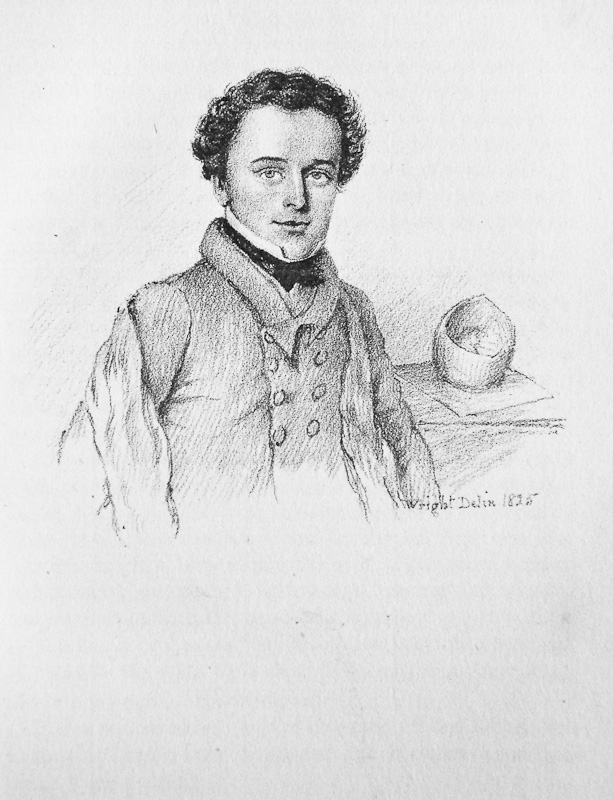

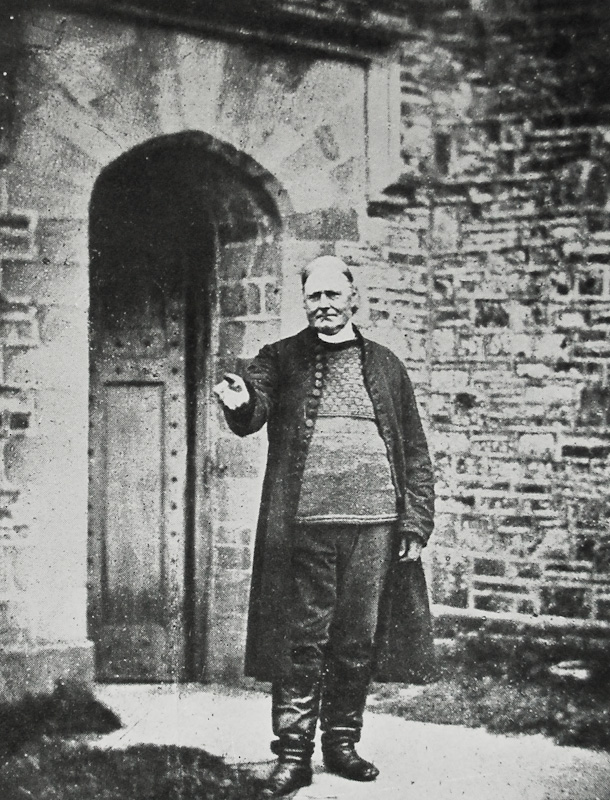

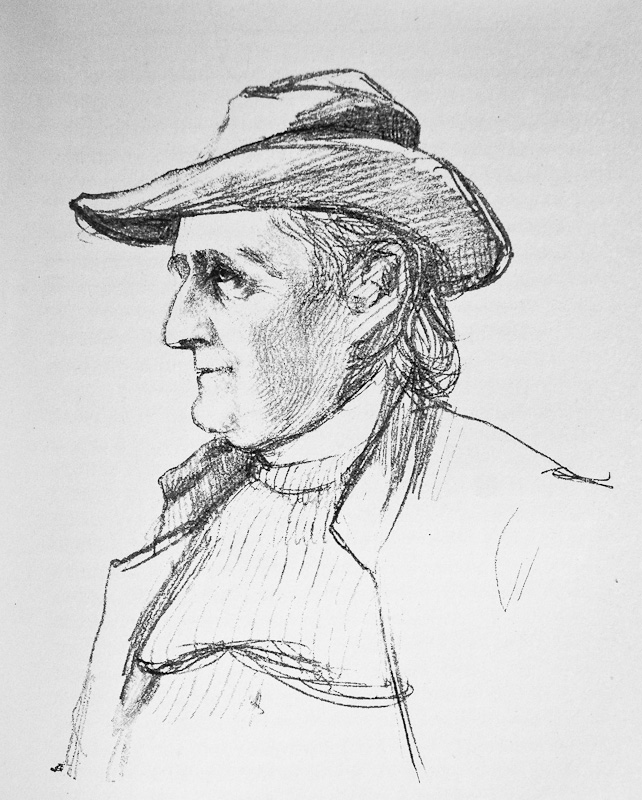
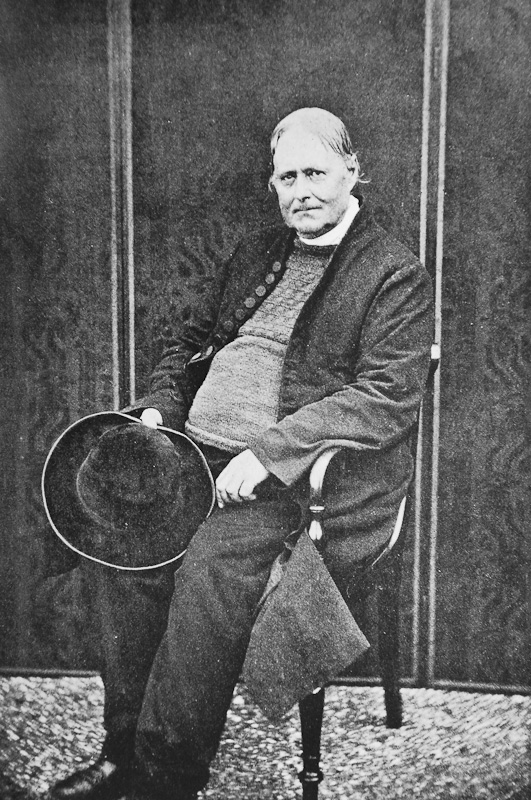
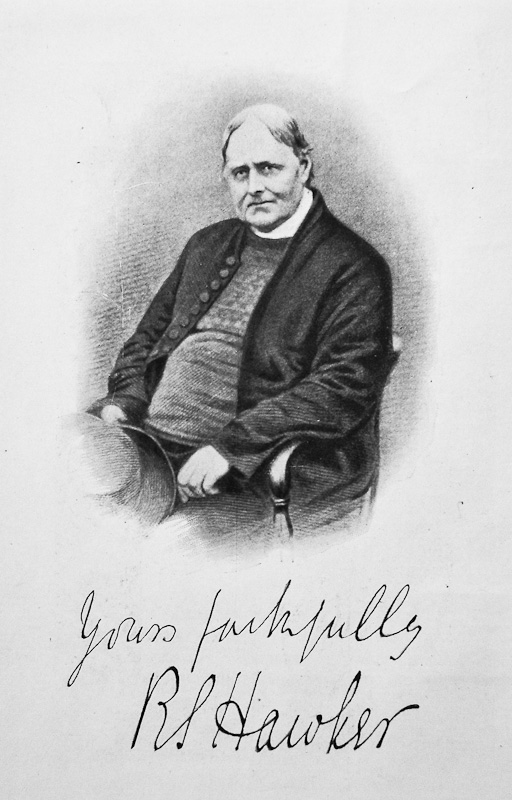

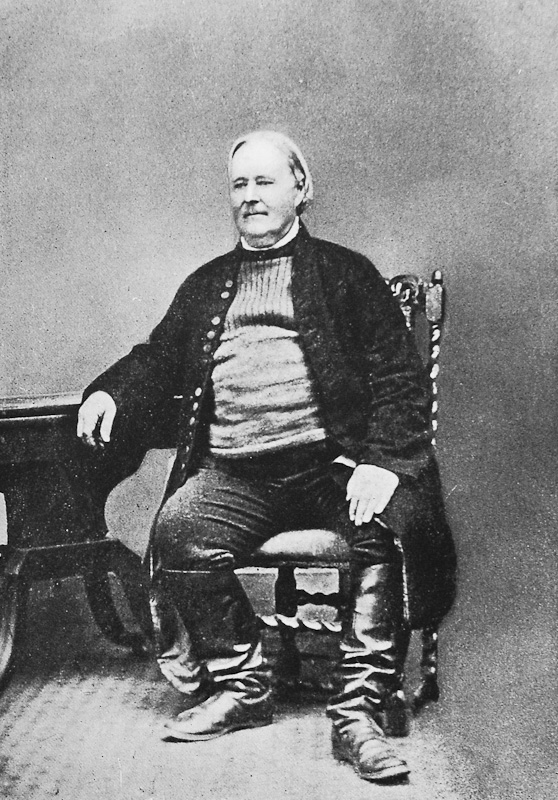
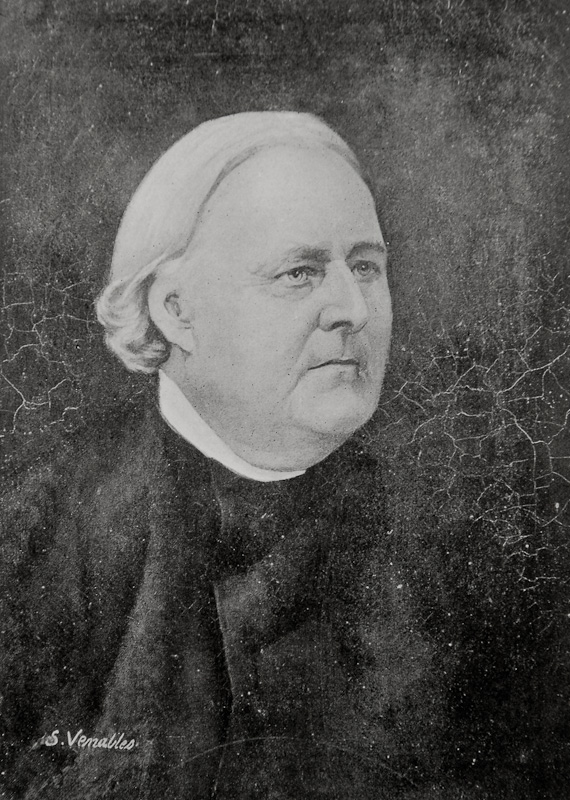
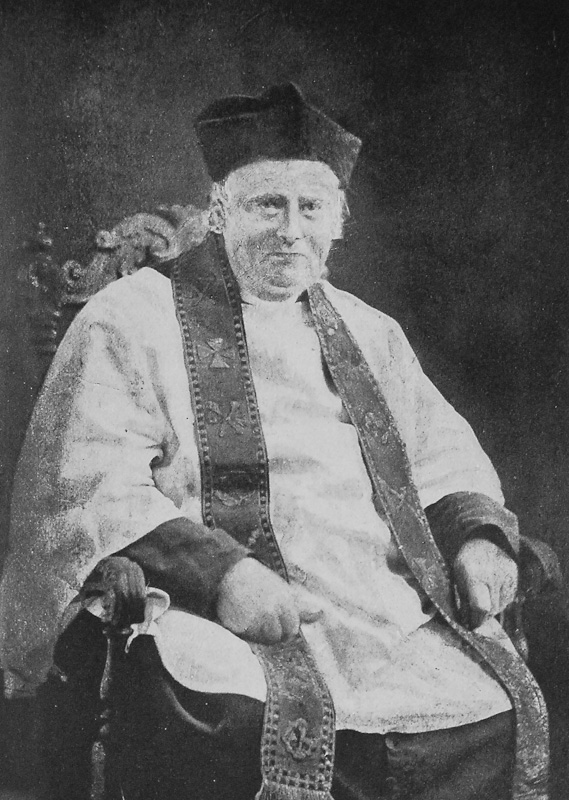
Comments
3 responses to “Portraits of R. S. Hawker (1803-75)”
Smashing!
I will visiting Bude/Camelford in Late Octoer 2012 for the first time this year from South Australia,partly in search of my family history ( my GG grandfather Charles Dinham left for Australia in 1838) and I noticed by chance Mrs Charles Dinham’s name in relation to the above painting. Dr John Dinham who married Mr Hawker’s sister around 1840 was a brother of my GG grandfather,so I would be keen to find out anything of the above Mrs Charles Dinham (perhaps deceased 100 years ago? Dr John’s son another Charles was born around 1846) anyway I would be most grateful for ANY news of the lady.etc.)
Regards Robert Dinham
Adelaide South Australia.
Dear Robert,I have photos of both Dr Dinham and his wife in my Hawker archive please contact me at The Old Vicarage Morwenstow if you would like copies.Jill Wellby